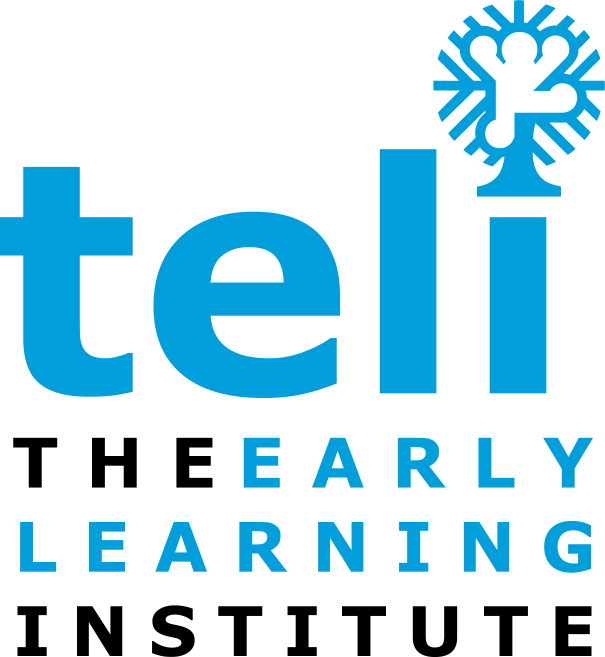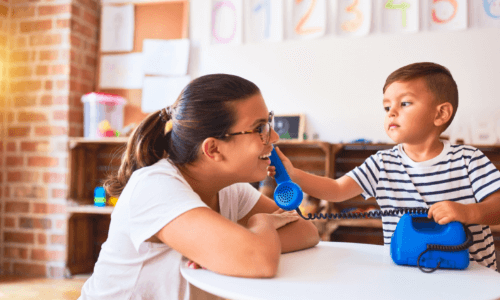By: Debbie Fekos, teli Occupational Therapist

Did you know your child’s toy box is a great place to look to help your child develop vital skills such as fine and gross motor skills? Yes, a single toy can help your child develop a variety of skills.
As your child grows, they begin to build upon some of their basic skills from squeezing your finger, to picking up a cheerio to being able to grasp a spoon to feed themselves. We asked our teli therapists for some of their favorite toys based on their Early Intervention experience.
NOTE: Since each child develops at a different rate, these are suggestions. If you have particular questions regarding these activities, please contact your health care provider, before beginning!
Here are some examples of toys helping child development:
1. Aqua Magic Mat for Kids ™ A popular toy that your child may love and can support their development is a plastic water filled mat with graphics.
Positioning: Strengthen upper body, shoulders, wrists, and hands by sitting on the floor in a sidesitting position or by lying on tummy or sit upright to play seated in a chair or at a table.
Two-handed coordination: One hand stabilizes the mat while other hand holds the marker to color and draw.
Hand strength: Hold medium-sized “marker” filled with water (magic pen) with fingers to scribble, doodle, and draw.
Visual motor: Visually stimulating and interesting to look at as different colors appear when marker touches the mat. Scribble, imitate, or copy – strokes, letters, numbers, or pictures.
Family participation: Join your child on the floor and model scribbling, drawing, and coloring so the child will mimic/imitate what you are doing. Demonstrate how to position and hold the marker in their hand. Talk about the activity that you are doing as you share time together. Give praise specifically and as often as appropriate.
Added benefits:
2. Stuck on Stories ™ – Velcro characters for your child to experiment with and bring the stories to life while strengthening motor skills and more.
Positioning: Strengthen upper body, shoulders, wrists, and hands by sitting on the floor in a side sitting position or by lying on tummy or sit upright to play seated in a chair or at a table.
Two-handed coordination: One hand stabilizes the book while other hand pulls off the Velcro pictures.
Hand strength: Pull and push medium-sized Velcro pictures with fingers and fingertips on and off the pages of the storybook. The Velcro provides good resistance for little hands to work against to strengthen.
Visual motor: Visually stimulating and interesting to place Velcro pictures of familiar characters on designated spaces on the pages of the storybook.
Family participation: Join your child on the floor or be seated next to them and demonstrate how to pull of the Velcro pictures and push them on designated spaces or creatively for child to build their own story. Provide physical help as needed. Talk about the story that you are creating as you share time together. Give praise specifically and as often as appropriate.
Added benefits:
- Socially interactive as one or more children or adults can play together.
- Enhance early reading skills with this interactive book.
- Foster creativity.
- Non-messy activity, portable, reusable, easy to set up and clean up.
- Motivating with different themes.
- FUN!
3. Buckle Toy ™ A playful toy that helps toddlers develop fine motor skills, cognitive skills, hand eye coordination, problem solving.
Positioning: Sit upright to play seated in a chair or at a table. Can also strengthen upper body, shoulders, wrists, and hands by lying on tummy to play.
Finger strength and manipulation: Fasten and unfasten with some resistance to push and pull small buckles.
Two-handed coordination: Use both hands together to fasten and unfasten buckles.
Visual motor: Align fasteners with fingers to connect and disconnect.
Family participation: Join your child on the floor or be seated next to them and demonstrate how to manipulate and connect one end of the fastener to fit into the matching end. Provide physical help as needed. Talk about the colors, numbers, or themes of the toy. Give praise specifically and as often as appropriate.
Added benefits:
- Great activity to entertain a child when traveling.
- Learn concepts of colors, numbers, and matching.
- Non-messy activity and portable.
- Motivating with different themes.
- FUN!


